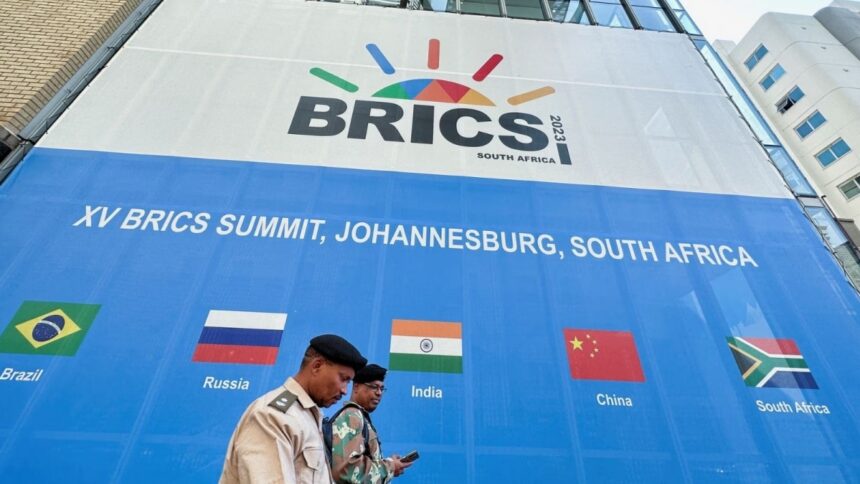Prime Minister Narendra Modi arrived in South Africa on Tuesday to attend the 15th BRICS summit to be held in Johannesburg from August 22 to 24. BRICS is an acronym of five major emerging economies: Brazil, Russia, India, China, and South Africa. The term was initially coined in 2001 by British economist Jim O’Neill. Jim believed that these five countries had the potential to become significant players in the global economy due to their large populations, growing economies, and increasing influence on international affairs.
That indeed is happening, with the rapid rise of China in the last three decades and now India – which is aiming to surpass Germany and Japan to become the third largest economy by 2027-28. The grouping, which is counted among some of the largest international blocks, currently represents 42 per cent of the world’s population, 26 per cent of global GDP, and 18 per cent of global exports, according to a report by the United Nations Conference on Trade and Development (UNCTAD).
The UNCTAD, which tracks trade and investment in developing countries, said the BRICS economies represent 18 per cent of global exports and their share has been increasing. “The growth rate of intra-BRICS exports exceeds the global average.” The intergovernmental organisation further said that BRICS has seen a more than four-fold increase in their annual FDI inflows, from $84 billion in 2001 to $355 billion in 2021. “Their share in global FDI inflows also doubled from 11 per cent in 2001 to 22 per cent in 2021.”
The grouping, which took shape in September 2006 and the first summit was held in 2009, has emerged as a formidable block in the Global South – a term used to describe countries that are generally less economically developed and have historically been marginalised in the global economic systems.
The world has so far seen the Western-led dominant economic system because of two US-based global lenders – IMF and World Bank. Many countries have sometimes found conditions set by these global lenders hard to implement, thereby failing to get credit. But some countries are now seeing potential in BRICS to counter that financial dominance and G-7, a grouping of seven wealthiest nations.
South Africa’s BRICS sherpa Anil Sooklal recently said that about 40 countries, including Argentina, Egypt, Indonesia, Iran, Saudi Arabia, and the United Arab Emirates, have expressed their interest to join the block. He also said that the grouping is seen as “a powerful force” and if measured by purchasing power parity, it now accounts for 31.7 per cent of global GDP, higher than the G-7’s 30.31 per cent.
Zorawar Daulet Singh, an author and foreign affairs analyst, recently said that the most visible success for BRICS at an economic level has been the founding of the New Development Bank (NDB) in 2014. Since its launch, he said, the bank has financed almost 100 projects with $34 billion, mainly in core infrastructure sectors (water, transportation, clean energy, digital) that do not typically attract conventional forms of credit.
Singh further said that expanding the bank’s membership and hence its capital base will widen the development finance role of this grouping over time. He said that according to one study, by the mid-2030s, the Shanghai-headquartered bank could reach a loan stock of $350 billion exceeding the finance by the World Bank.
However, Brazilian President Lula da Silva on Tuesday said BRICS aims to organise the developing Global South and is not meant to counter the US and the G7. “We do not want to be a counterpoint to the G7, G20 or the United States.”








